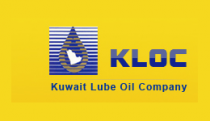Global Copper Wire Market (2022 to 2027) - Industry Trends, Share, Size, Growth, Opportunity and Forecasts - ResearchAndMarkets.com
The "Copper Wire Market: Global Industry Trends, Share, Size, Growth, Opportunity and Forecast 2022-2027" report has been added to ResearchAndMarkets.com's offering.
The global copper wire market reached a volume of 18.6 Million Tons in 2021. Looking forward, the publisher expects the market to reach 25.5 Million Tons by 2027, exhibiting a CAGR of 5.70% during 2022-2027.
Keeping in mind the uncertainties of COVID-19, we are continuously tracking and evaluating the direct as well as the indirect influence of the pandemic on different end use industries. These insights are included in the report as a major market contributor.
Copper wires are primarily used in electrical wiring. These wires offer high electric transmission with minimal resistance and require less insulation as compared to other metals. Copper wires are widely utilized in making copper cables, wherein multiple copper wires are assembled into a common jacket. Both copper wires and cables find diverse applications across numerous industries, such as building and construction, power generation, telecommunication, transportation, electronics, etc.
The increasing demand for uninterrupted electricity supply has led to the development of power transmission and distribution infrastructures, thereby driving the demand for copper wires on a global level. Furthermore, the significant investments in the construction sector and a growing number of modern housing projects are also propelling the copper wire market. A considerable rise in the usage of copper wires in heating, ventilation, and air conditioning (HVAC) systems, electronic entertainment devices, lighting solutions, etc., across smart homes is further fueling the demand for copper wires.
Additionally, the increasing environmental concerns towards high carbon emissions are leading to the upgradation of existing power transmission and distribution units, thereby augmenting the use of copper wires. In line with this, the rising number of power generation units, coupled with the escalating need for grid interconnections, are also catalyzing the product demand for overhead, underground, and submarine installations. Several government bodies are focusing on the establishment of grid connectivity in remote and rural areas across several developing nations, which is positively influencing the market for copper wires.
Moreover, the rising adoption of copper wires in telecom power systems to assist in telecommunication services is acting as another significant growth-inducing factor. Besides this, the elevating levels of industrialization, along with the growing penetration of integrated machinery for advanced operational efficiency, are also bolstering the demand for copper wires. Additionally, the emergence of hybrid power solutions that offer high energy density, minimal carbon footprints, and enhanced reliability is further expected to drive the global copper wire market in the coming years.
Competitive Landscape:
The competitive landscape of the industry has also been examined along with the profiles of the key players.
Key Questions Answered in This Report:
- How has the global copper wire market performed so far and how will it perform in the coming years?
- What has been the impact of COVID-19 on the global copper wire market?
- What are the key regional markets?
- What is the breakup of the market based on the application?
- What are the various stages in the value chain of the industry?
- What are the key driving factors and challenges in the industry?
- What is the structure of the global copper wire market and who are the key players?
- What is the degree of competition in the industry?
Key Topics Covered:
1 Preface
2 Scope and Methodology
3 Executive Summary
4 Introduction
5 Global Copper Wire Market
5.1 Market Overview
5.2 Market Performance
5.3 Impact of COVID-19
5.4 Market Breakup by Application
5.5 Market Breakup by Region
5.6 Market Forecast
6 Market Breakup by Application
7 Market Breakup by Region
8 Copper Wire Manufacturing Process
8.1 Product Overview
8.2 Detailed Process Flow
8.3 Various Types of Unit Operations Involved
8.4 Mass Balance and Raw Material Requirements
9 Project Details, Requirements and Costs Involved
9.1 Land, Location and Site Development
9.2 Plant Machinery
9.3 Raw Materials
9.4 Packaging Requirements and Expenditures
9.5 Transportation Requirements and Expenditures
9.6 Utilities Requirements and Expenditures
9.7 Manpower Requirements and Expenditures
10 Loans and Financial Assistance
11 Project Economics
11.1 Capital Cost of the Project
11.2 Operating Expenses
11.3 Expenditure Projections
11.4 Income Projections
11.5 Product Pricing and Margins
11.6 Taxation
11.7 Depreciation
11.8 Financial Analysis
11.8.1 Liquidity Analysis
11.8.2 Profitability Analysis
11.8.2.1 Payback Period
11.8.2.2 Net Present Value
11.8.2.3 Internal Rate of Return
11.8.2.4 Profit and Loss Account
11.8.3 Uncertainty Analysis
11.8.4 Sensitivity Analysis
12 Regulatory Procedures and Approval
13 Key Success and Risk Factors
14 SWOT Analysis
15 Value Chain Analysis
16 Porters Five Forces Analysis
17 Price Analysis
18 Competitive Landscape
For more information about this report visit https://www.researchandmarkets.com/r/vd1bgx
View source version on businesswire.com: https://www.businesswire.com/news/home/20220404005579/en/



